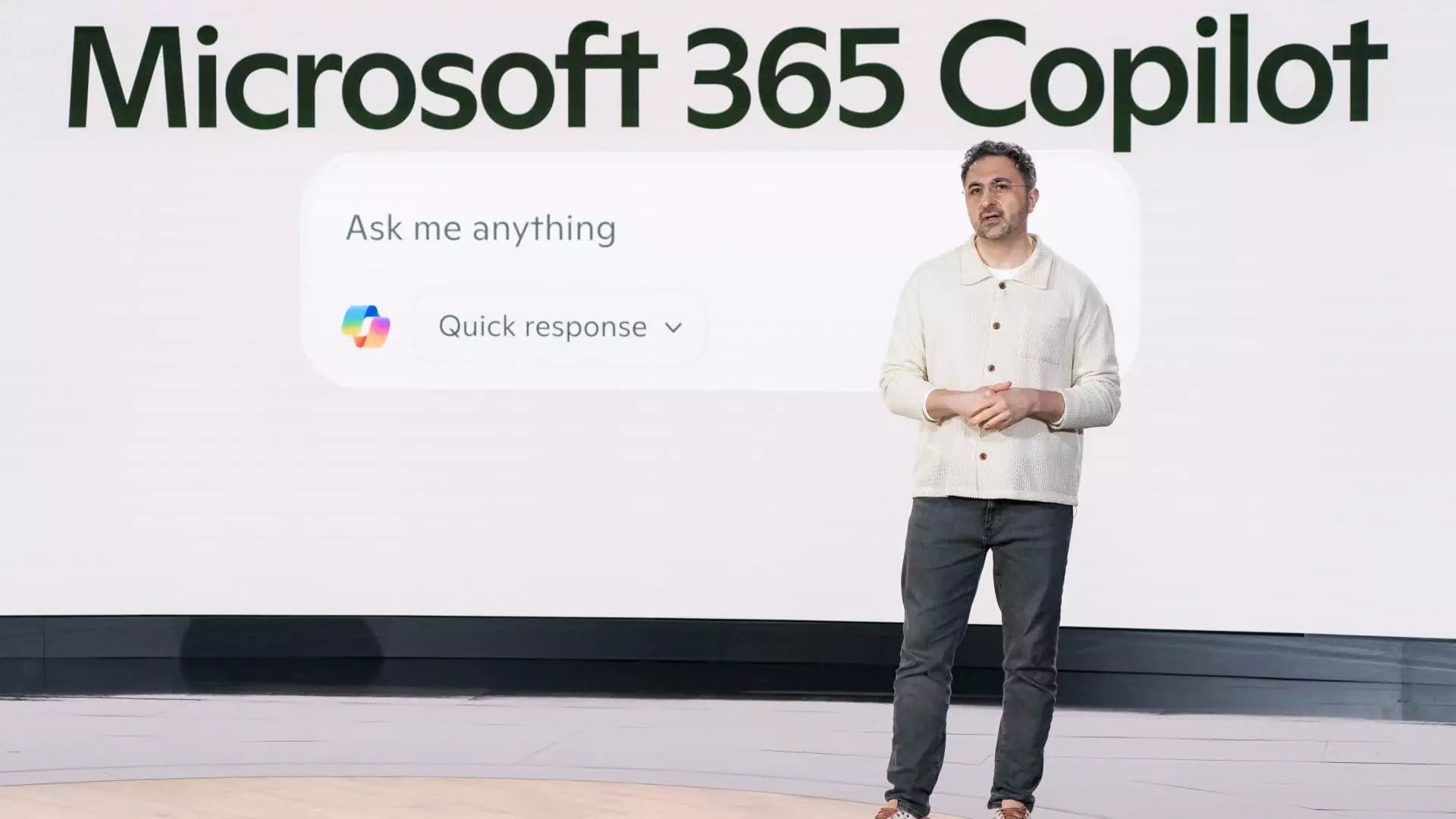In a fast-paced tech landscape defined by perpetual innovation, one might expect giants like Microsoft to spearhead the latest developments in artificial intelligence. However, Mustafa Suleyman, the visionary CEO of AI at Microsoft, has articulated a compelling strategy that defies conventional wisdom. Instead of rushing into the fray to build state-of-the-art AI models, Microsoft is strategically opting to take a step back, aligning itself with the philosophy of waiting to learn from those who venture first. This approach has roots in practicality; Suleyman reasoned that being “three or six months behind” allows the company to not only reduce its costs but also to focus on tailoring its solutions to specific problems.
The crux of Suleyman’s argument is simple yet profound: waiting grants the team at Microsoft the strategic advantage to observe, learn, and adapt. This method, dubbed “off-frontier,” allows Microsoft to refine its offerings instead of playing catch-up against competitors racing to the cutting edge. By concentrating on targeted applications of AI, they can provide more holistic and effective solutions, rather than fragmented ones that are merely a response to existing trends.
The Advantages of Collaboration
Moreover, Microsoft has demonstrated a remarkable ability to build strategic partnerships that enhance its AI capabilities. Collaborations with startups such as OpenAI have reaped substantial rewards, clearly evidenced by their capabilities in AI-driven language models that have revolutionized tools like Bing and Copilot. However, the relationship is not without its complexities. The tech giant’s financial investment of $13.75 billion suggests a vested interest and reliance on OpenAI; yet recent developments indicate that fissures may be emerging in this partnership. OpenAI’s exploration of collaborations with other clouds, notably with Oracle, raises questions about the longevity of a relationship that has been transformative for both entities.
Although the partnership has afforded Microsoft access to groundbreaking AI technologies, the emergence of competition is threatening to muddle the waters. The reality is that in technology—much like in politics—alliances shift, creating a landscape where loyalty may not always translate into mutual benefit. Microsoft needs to ensure that its dependence on OpenAI doesn’t expose it to strategic vulnerabilities, forcing it into a position of inferiority.
Internal Development vs. External Partnerships
Suleyman’s insight critically probes the notion that building the most advanced AI models should be the sole focus for a company like Microsoft. He emphasizes the importance of cultivating an internal AI team capable of developing its own solutions. This dual approach—combining collaboration with external partners while nurturing in-house capabilities—undoubtedly reflects a foundation intended to secure long-term independence in the dynamically changing tech environment.
While such an approach shines a light on the necessity of self-sufficiency in AI, it also raises an uncomfortable truth about industry norms. Is the relentless pursuit of the “next big thing” truly the best course of action? In striving to build the “absolute frontier,” technology firms risk losing sight of the end users’ actual needs, becoming absorbed in a race that bears little relevance outside of boardrooms and tech expos. If anything, Microsoft’s strategy to serve its specific use cases rather than the overarching hype demonstrates a refreshing departure from this norm.
A Pragmatic View of Progress
Suleyman’s remarks hinge upon a pragmatic lens focused on value over velocity. By demystifying the allure of being the first, he reinforces the argument that meaningful progress doesn’t necessarily equate to being at the forefront of innovation. The emphasis on adopting a more measured approach signals a maturation of thought, not just within Microsoft but within the wider technology sector.
It’s not merely about striving for the best model but rather about the adaptability and efficacy of AI applications in real-world contexts. Adopting this measured approach can be seen as a form of humility—one that recognizes the limitations inherent in rushing to excellence. After all, in a world where algorithms touch every aspect of our lives, the quality of the application matters far more than the title of being “first.”
Microsoft’s AI strategy exemplifies a broader realization in technology: we must navigate the landscape wisely, even if it means taking a step back from the precipice of advancement.


Leave a Reply